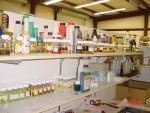Kenny0
Active member
- 121
- 30
- 28
- Location
- Leland, Iowa
I also agree you don't need any additives. Keep or remove any water in the fuel tank, run and operate the generator regularly and use high quality filters. Don't buy the cheapest ones you find, also a high priced filter is not always a quality filter. You should be doing this already and no additives necessary. Ultra low diesel fuel imo has been given a bad rap. It all started when Europe went to ultra low sulfur fuel. The sulfur is not the lubricant, the process to remove the sulfur removes the lubricity. In Europe the ultra low sulfur fuel wasn't checked for lubricity to begin with and that's when the problems started. Lots of injection pump failures, then they started adding lubricity to the fuel and no more problems. Europe started using ultra low sulfur before we did. I have worked on and around a lot of diesel equipment during the time of the transition to ultra low sulfur diesel and there were no rash of injection pump or fuel system related issues. All diesel fuel gets lubricity added to it before the pump. One way they add lubricity is add bio diesel of up to 5% which does not have to be labeled as bio fuel at the pump, there are also other ways they add lubricity. All fuel from the pump has lubricity added. The lubricity of diesel fuel started in Europe and never died. IMO the lubricity thing should be put in the grave, but most likely won't because of the internet. In the end, do what makes you comfortable. I have never used any additives except in my MEP 802 I use a fuel stabilizer. I know a lot of people and construction companies that don't use additives of any kind and they don't have injection pump problems.



